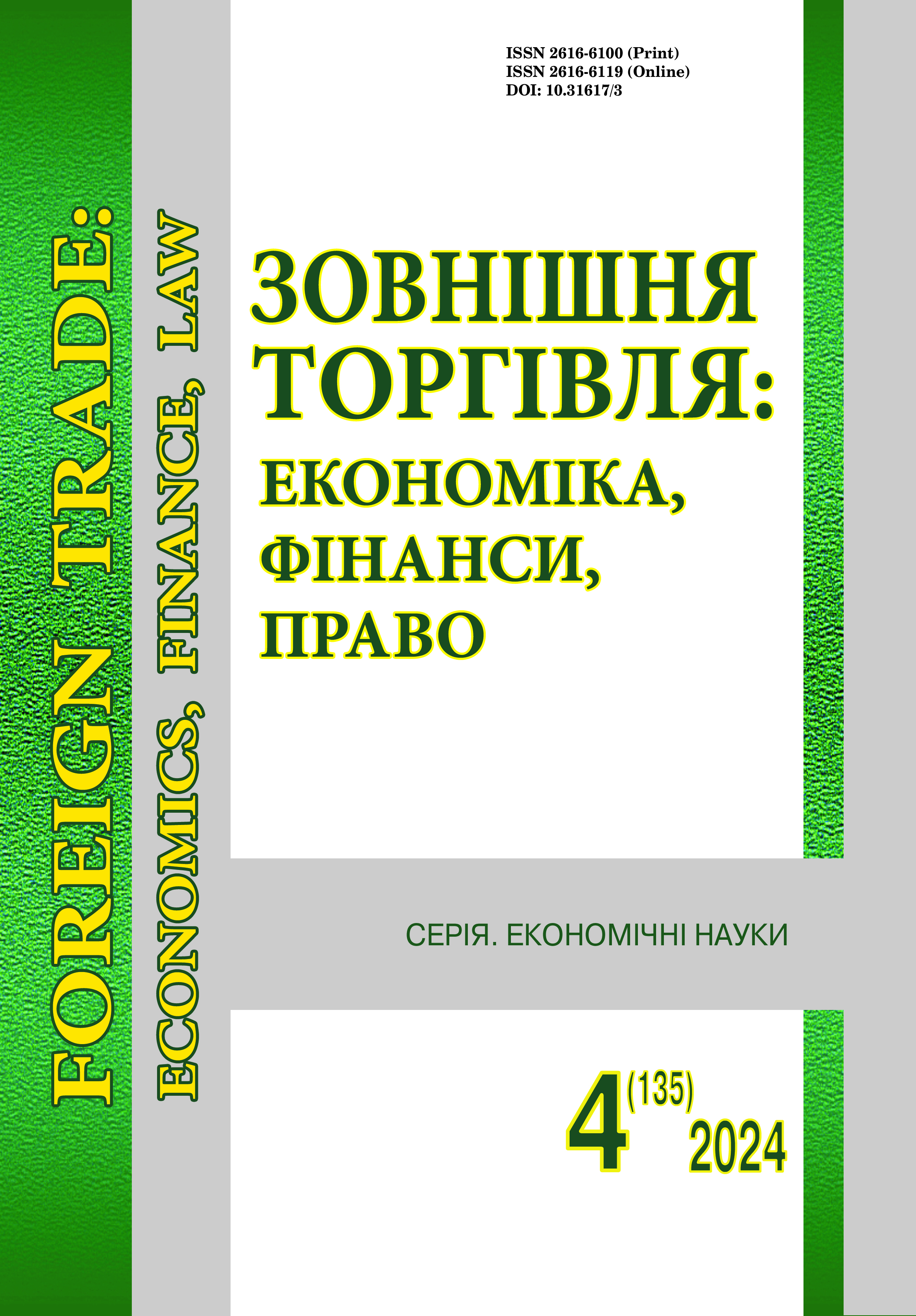Re-emigration of Ukrainian refugees
DOI:
https://doi.org/10.31617/3.2024(135)04Keywords:
migration policy, population migration, refugees from the war, national security, re-emigration.Abstract
Based on the analysis of the social composition and material and financial support of Ukrainian refugees from the war, the prospects of their return after the end of hostilities have been determined. The hypothesis is put forward that if the current Russian-Ukrainian war takes the form of a "frozen" conflict with the end of active hostilities after the conclusion of an agreement or a series of cease-fire agreements, this may accelerate the return to the homeland of a significant part of Ukrainian refugees who have found refuge in the countries of the European Union. Based on the analysis of the attitude of Ukrainians, who received temporary shelter abroad, to returning to Ukraine, depending on the scale and nature of the armed confrontation with the Russian Federation and the actions of the Ukrainian government, the conditions for the increase in the number of those who are ready to return are predicted. Specific conditions of competition in the internal labor market under the conditions of employment of re-emigrants are highlighted. National and regional programs that should contribute to the return of a significant part of Ukrainian refugees from the war to Ukraine are characterized, as well as factors that can cause a reverse effect and a surge of migration abroad for the reunification of families outside the borders of our state. With the help of sociological and orientation-value methods , the hypothesis, that is put forward on the basis of the results of sociological surveys, was tested, that the main condition for the return of Ukrainian refugees from the war to their homeland is, first of all, ensuring the level of personal security, which they associate with the cessation of wartime or hostilities, and the prospect of obtaining a well-paid job and the level of socialization do not play a decisive role in making a decision on re-emigration. The relationship between the perception of the prospects for the end of the current Russian-Ukrainian war and the return of Ukrainians, primarily from European countries, to their homeland is determined, considering that the vast majority of those who left are women with children. The impact of regional competition on the labor market in Ukraine on the implementation of relevant programs for the return of Ukrainian refugees from the war was evaluated.
References
Adda J., Dustmann C., & Görlach J. (2022). The Dynamics of Return Migration, Human Capital Accumulation, and Wage Assimilation. The Review of Economic Studies, 89(6), 2841-2871. https://doi.org/10.1093/restud/rdac003 DOI: https://doi.org/10.1093/restud/rdac003
Andrle, J. (2023). How Many Ukrainians Will Return Home After the War? The answer is not as straightforward as youʼ d think… https://www.peopleinneed.net/how-many-ukrainians-will-return-home-after-the-war-10280gp
Andrle, J. (2024). European countries are cutting housing support for refugees, leaving vulnerable groups at risk. https://www.peopleinneed.net/european-countries-are-cutting-housing-support-for-refugees-leaving-vulnerable-groups-at-risk-11432gp
Bosse, G. (2022). Values, rights, and changing interests: The EUʼ s response to the war against Ukraine and the responsibility to protect Europeans. https://doi.org/10.1080/13523260.2022.2099713 DOI: https://doi.org/10.1080/13523260.2022.2099713
International Labour Office. (2021). ILO Global Estimates on International Migrant Workers - Results and Methodology - Third edition. https://www.ilo.org/sites/default/files/wcmsp5/groups/public/@dgreports/@dcomm/@publ/documents/publication/wcms_808935.pdf
Gerlach, I., & Ryndzak, O. (2022). Ukrainian Migration Crisis Caused by the War. https://journalse.com/pliki/pw/2-2022-Gerlach.pdf; https://doi.org/10.33067/SE.2.2022.2 DOI: https://doi.org/10.33067/SE.2.2022.2
Morrice, L. (2022) Will the war in Ukraine be a pivotal moment for refugee education in Europe? https://doi.org/10.1080/02601370.2022.2079260 DOI: https://doi.org/10.1080/02601370.2022.2079260
Operational Data Portal. (2024). Ukraine refugee situation. https://data.unhcr.org/en/situations/ukraine
People in Need. (2024). Ukrainian Refugee Crisis: The Current Situation. https://www.peopleinneed.net/the-ukrainian-refugee-crisis-current-situation-9539gp
Van Houte, M., & Davids, T. (2008). Development and Return Migration: From Policy Panacea to Migrant Perspective Sustainability. Third World Quarterly, 29(7), 1411-1429. https://doi.org/10.1080/01436590802386658 DOI: https://doi.org/10.1080/01436590802386658
Bezruchko, A. (2024). The future belongs to those who implement innovations: how Ukraine can catch up with the developed countries of the world. https://www.epravda.com.ua/columns/2024/04/8/712140
Grants for business: how to get money for opening and development. (2023). https://fondy.ua/uk/knowledge/grants/
Dubrovskyi, V., Cherkashyn, V., Vakhitova, A., & Getman, O. (2024). Military migrants: world experience and Ukrainian peculiarities. https://help-ukraine.org.ua/wp-content/uploads/2024/04/Policy-war-migranti-final-1.pdf
Ivanov, O. (2022). To flee or to stay for the Winter. How Russian missile strikes affected Ukrainian womenʼs desire to go and work abroad. https://biz.nv.ua/ukr/economics/trudova-migraciya-ta-bizhenci-skilki-ukrajinok-ladnivijihati-za-kordon-ciyeji-zimi-opituvannya-50278124.html
Karpliuk, D. (2023). The war in the Russian Federation caused the biggest migration crisis since World War II - UN. https://glavcom.ua/country/society/vijna-rf-sprichinila-najbilshu-mihratsijnu-krizu-z-chasiv-druhoji-svitovoji-oon-900795.html
Libanova, E. (2022a). War with Russia: how to give jobs to refugees and what to do after. https://zn.ua/ukr/SOCIUM/vijna-z-rosijeju-jak-dati-robotu-bizhentsjam-i-shcho-robiti-pislja.html
Libanova, E. (2022b). "We can lose 5 million people" - demographer Ella Libanova. https://suspilne.media/257015-mi-mozemo-vtratiti-5-mln-ludej-demografina-ella-libanova/
Libanova, E. (2022c). After the war, not women will go back to Ukraine, but their husbands will go abroad, the sociologist said. https://focus-ua.cdn.ampproject.org/v/s/focus.ua/uk/amp/ukraine/520997-posle-voyny-ne-zhenshchiny-poedut-nazad-v-ukrainu-a-ih- muzhya-otpravyatsya-za-rubezh-sociolog/
Libanova, E. (2023). Ukraine will need to attract at least 300,000 migrants every year. Sociologist Ella Libanova on existential problems with demography and what can be done? https://forbes.ua/war-in-ukraine/35-mln-ukraintsiv-u-2033-mu-nadzvichayno-optimistichniy-stsenariy-sotsiologinya-ella-libanova-pro-veliki-problemi-z-demografieyu-v-ukraini-yaki-zarodilisya-shche-do-viyni-shcho-z-tsim-robiti-25092023-16201
Libanova, E. (2024). There will be no more 40 million people. Or it will not be Ukrainians. https://lb.ua/news/2024/01/29/595959_ella_libanova_40_mlnnaselennya_vzhe.html
Mykhailyshyn, D. (2024). Fewer and fewer are willing to return. How the attitudes of Ukrainian refugees have changed. https://www.epravda.com.ua/publications/2024/03/25/711576
Murlykina, A. (2023). What is it like to live after losing everything. Millions of Ukrainians became homeless because of the war. https://texty.org.ua/articles/109781/zhyty-vtratyvshy-vse-miljony-ukrayinciv-staly-bezhatchenkamy-cherez-vijnu/
Explanatory note to the draft Law of Ukraine "On the State Budget of Ukraine for 2023" (2022). https://itd.rada.gov.ua/584ab154-4db7-48ba-9ac0-443e8aa76e02
Slutsky, B. (2022). Time to work: how to get help from the state to start your own business. https://www.unian.ua/economics/finance/dopomoga-na-vidkrittya-biznesu-yak-otrimati-dopomogu-vid-derzhavi-na-vidkrittya-vlasnoji-spravi-novin)
Social cohesion and public trust. (2023). https://dtm.iom.int/sites/g/files/tmzbdl1461/files/reports/IOM%20D%26A%20Social%20Cohesion%20and%20Public%20Trust_final%20version_ENG-UKR_%20%281%29.pdf
Yankovsky, O., & Badiuk, O. (2023). "They dispossess housing and resell it." How can Ukrainians protect their property during the occupation? https://www.radiosvoboda.org/a/novyny-pryazovya-rosiyski-okupanty-vidbyrayut-zhytlo-ukrayintsiv/32418933.html
Additional Files
Published
How to Cite
Issue
Section
License

This work is licensed under a Creative Commons Attribution 4.0 International License.
This work is licensed under a Creative Commons Attribution 4.0 International (CC BY 4.0)







